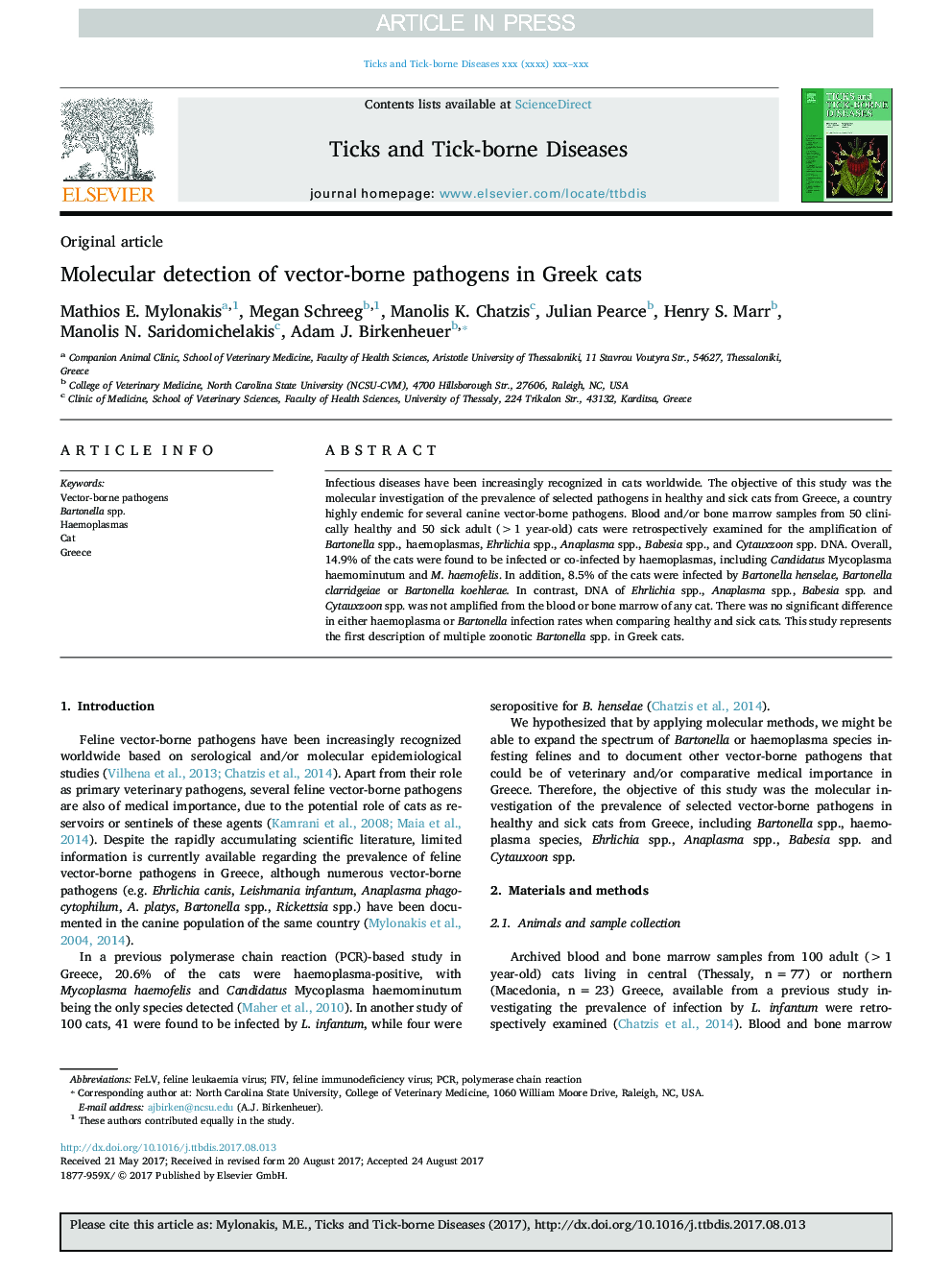| Article ID | Journal | Published Year | Pages | File Type |
|---|---|---|---|---|
| 8507405 | Ticks and Tick-borne Diseases | 2018 | 5 Pages |
Abstract
Infectious diseases have been increasingly recognized in cats worldwide. The objective of this study was the molecular investigation of the prevalence of selected pathogens in healthy and sick cats from Greece, a country highly endemic for several canine vector-borne pathogens. Blood and/or bone marrow samples from 50 clinically healthy and 50 sick adult (>1 year-old) cats were retrospectively examined for the amplification of Bartonella spp., haemoplasmas, Ehrlichia spp., Anaplasma spp., Babesia spp., and Cytauxzoon spp. DNA. Overall, 14.9% of the cats were found to be infected or co-infected by haemoplasmas, including Candidatus Mycoplasma haemominutum and M. haemofelis. In addition, 8.5% of the cats were infected by Bartonella henselae, Bartonella clarridgeiae or Bartonella koehlerae. In contrast, DNA of Ehrlichia spp., Anaplasma spp., Babesia spp. and Cytauxzoon spp. was not amplified from the blood or bone marrow of any cat. There was no significant difference in either haemoplasma or Bartonella infection rates when comparing healthy and sick cats. This study represents the first description of Bartonella koehlerae in Greek cats.
Keywords
Related Topics
Life Sciences
Agricultural and Biological Sciences
Animal Science and Zoology
Authors
Mathios E. Mylonakis, Megan Schreeg, Manolis K. Chatzis, Julian Pearce, Henry S. Marr, Manolis N. Saridomichelakis, Adam J. Birkenheuer,
